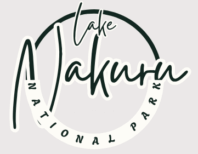The Rhino Sanctuary in the Eastern Forest of Lake Nakuru National Park is one of Kenya’s most successful wildlife conservation zones — and a top highlight for anyone visiting the park. It is the best place near Nairobi to reliably see both eastern black rhinos and southern white rhinos in the wild, all within a highly secure but fully natural savannah–forest habitat.
This zone is one of the first major game-viewing routes after entering the park, and serves as a flagship conservation success story under Kenya Wildlife Service (KWS).
Location & Accessibility
- Found in the eastern section of Lake Nakuru National Park, directly after entering via Main Gate or Lanet Gate
- Easily included as Stop #1 on any well-planned morning safari route
- Dominated by thick yellow fever tree forests, open grass plains, and seasonal wetlands — ideal for browsing rhinos
Why the Rhino Sanctuary Is a Must-Visit
✅ One of the most reliable places in Africa to see wild black & white rhinos
✅ Fully fenced but open ecosystem — 100% natural habitat, no zoo atmosphere
✅ Rhino conservation success story (from near extinction recovery)
✅ Excellent early-morning safari zone — when rhinos are actively feeding
✅ Close-up photographic opportunities from vehicle-safe distance
Species You Can See Here
| Species | Likelihood | Notes |
|---|---|---|
| Black rhino | Very high | Browsers; often seen in thick bush |
| White rhino | Very high | Grazers; often out on open grass plains |
| Cape buffalo | Very high | Often seen grazing alongside white rhinos |
| Rothschild’s giraffe | High | Unique subspecies with white “socks” |
| Waterbuck & Impala | High | Core herbivore species |
| Lions | Possible | Follow rhino & buffalo herds |
| Birdlife | Exceptional | Including storks, weavers, hornbills |
About the Conservation Program
- Lake Nakuru was declared a rhino sanctuary in the 1980s
- Major focus on protecting Eastern Black Rhinos — once reduced to under 400 individuals nationwide
- Home to both black & white rhinos, fully monitored by KWS rangers
- Sanctuary supports breeding and metapopulation transfers to seed new reserves
- Considered one of the safest rhino habitats in East Africa
Best Time to Visit
| Time | Why It’s Ideal |
|---|---|
| 6:30–9:30 AM | Rhinos feeding openly before heat builds |
| 4:00–5:30 PM | Cooler again, rhinos may return to open plains |
| Midday | They retreat to shade — sightings still possible, but less active |
Safari Route Tip
This is usually the FIRST and MOST IMPORTANT game drive stop — professional guides almost always begin here:
Main Gate → Eastern Rhino Sanctuary → Flamingo Belt (Lake Shore) → Lion Hill → Baboon Cliffs
That ensures maximum chance of viewing rhinos while active before the day heats up.
Photography Tips
- Telephoto lens (200–400mm) recommended
- Stay patient & give space — rhinos often walk directly toward vehicles if unprovoked
- Early morning gives best soft light
- White rhinos easier to photograph (they graze in the open)
- Black rhinos are shy — look along tree lines and bush edges
In Summary — Why This Sanctuary Matters
| Feature | Highlight |
|---|---|
| Conservation value | One of Kenya’s leading black rhino strongholds |
| Wildlife density | High concentration & reliability of sightings |
| Experience quality | Natural ecosystem — not artificial or zoo-like |
| Safari priority | First-stop essential for every serious visitor |
| Accessibility | Easily reached from park entrance — low travel time |
